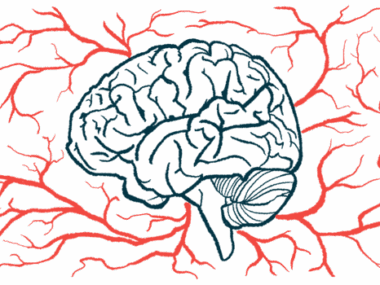FDA Extends Use of Oxbryta to Children Starting at Age 4
Written by |

The U.S. Food and Drug Administration (FDA) has agreed to expand the use of Oxbryta (voxelotor) — the first approved therapy targeting the underlying cause of sickle cell disease (SCD) — to children as young as 4. The therapy previously was approved for SCD patients ages 12 and older.
This extension was accompanied by the agency’s approval of a dispersible once-daily 300 mg tablet of Oxbryta, shown to result in similar blood-related benefits as those seen with the approved 1,500 mg daily dose (three 500 mg tablets) in older patients.
A new grape-flavored formulation, which can be mixed with water or other clear drinks at room temperature for easier swallowing, allows for weight-based dosing in younger children. It is also suited for older patients who have difficulty swallowing tablets.
“For decades, the sickle cell disease community has been profoundly underserved, and there have been limited treatment options for younger patients with their whole lives ahead of them. Complications of SCD that can cause irreversible organ damage are known to begin in the first few years of life, which is why earlier intervention is critical,” Ted W. Love, MD, president and CEO of Global Blood Therapeutics (GBT), which developed and markets the treatment, said in a press release.
“Today’s FDA approval of Oxbryta for children as young as 4 years old — and with a pediatric-friendly dosage form — is an important advance in the treatment of this devastating, lifelong condition,” Love added.
Leaders of the Sickle Cell Disease Association of America agreed.
“The Sickle Cell Disease Association of America congratulates GBT for the approval of Oxbryta in children as young as 4 years old,” said Lewis Hsu, MD, PhD, the group’s chief medical officer. “Having the new formulation and approval down to 4 years of age is meaningful for families living with sickle cell disease and the community more broadly. We will work closely with GBT, our partners, and the sickle cell community to promote awareness and education about this new therapy to allow patients to make informed decisions, while advocating for equitable access to care.”
GBT has a support program for those prescribed Oxbryta, called GBT Source Solutions, to help ensure that eligible patients can access the medication. The program provides a wide range of practical, educational, and financial support customized to each patient’s needs.
Both regulatory requests for approval were granted priority review by the FDA, shortening the process from 10 to six months. The decisions come about two years after Oxbryta was conditionally approved in the country for adults and adolescents, 12 and older.
An approval application for this older patient group is currently being reviewed by regulators in Europe, with their Committee for Medicinal Products for Human Use (CHMP) recently recommending such approval.
“This positive CHMP opinion marks an important step forward to a new medicine for tens of thousands of people in Europe living with the disease,” Love said in a separate press release announcing the recommendation.
If accepted by the European Commission, which makes the final decision, Oxbryta will become the first disease-modifying therapy approved in Europe for SCD patients. A decision is expected early next year.
Oxbryta is a first-in-class oral therapy that works by increasing hemoglobin’s ability to bind oxygen, thereby preventing its clumping and the resulting sickling and destruction of red blood cells — SCD’s underlying cause. Hemoglobin is the protein inside red blood cells that is responsible for oxygen transport.
Both regulatory applications were supported by data from the ongoing Phase 2 HOPE-KIDS 1 trial (NCT02850406), which is evaluating the therapy’s one-year safety, pharmacokinetics, and effectiveness in up to 155 children with SCD. Pharmacokinetics refers to the therapy’s movement into, through, and out of the body.
The study comprises four parts, each involving patients of differing age ranges, from 9 months to 17 years, and assigned to single or multiple doses of the therapy. Children under 12 are being given weight-based doses through the now-approved dispersible tablet formulation.
Previous six-month data from the first 45 treated children, ages 4–11, showed that Oxbryta’s weight-based doses were generally well-tolerated and resulted in rapid and sustained increases in hemoglobin levels.
Notably, 47.1% of these children achieved a hemoglobin response, defined as a hemoglobin raise of at least 1 gram per deciliter (g/dL). This was similar to the 51% of patients, ages 12–65, given the 1,500 mg daily dose in the Phase 3 HOPE trial (NCT03036813) that supported Oxbryta’s approval for older patients in the U.S.
Treatment in these younger children resulted in a mean hemoglobin increase of 1 g/dL, a 26% hemoglobin occupancy — the percentage of hemoglobin bound by Oxbryta — and a reduction in several markers of red blood cell destruction. Again, this was consistent with HOPE study findings in older patients.
Notably, these benefits were observed regardless of treatment with hydroxyurea, highlighting Oxbryta’s potential to improve pediatric patients’ health beyond standard treatment.
HOPE-KIDS1 is also testing weight-based doses of Oxbryta in up to 30 infants and young children, ages 9 months to 3 years, to support a potential request for the therapy’s approval in this very young group of patients.
Confirmatory trial
GBT is evaluating Oxbryta in up to 224 children, ages 2–14, with SCD and a slightly higher risk of stroke — as assessed through a non-invasive ultrasound that detects changes in brain blood flow — in the international Phase 3 HOPE-KIDS 2 trial (NCT04218084).
Children with SCD are at a higher risk of stroke due to disease-associated increased blood flow in certain brain arteries.
Serving as a confirmatory trial for the therapy’s full U.S. approval, the study will investigate whether Oxbryta is superior to a placebo at lowering the children’s risk of stroke after about six months of treatment.
Of note, patients under 18 years of age who participated in an Oxbryta clinical trial can choose to enter an ongoing open-label extension study (NCT04188509), in which all will receive the therapy for a longer period. The study is expected to conclude in January 2026.






